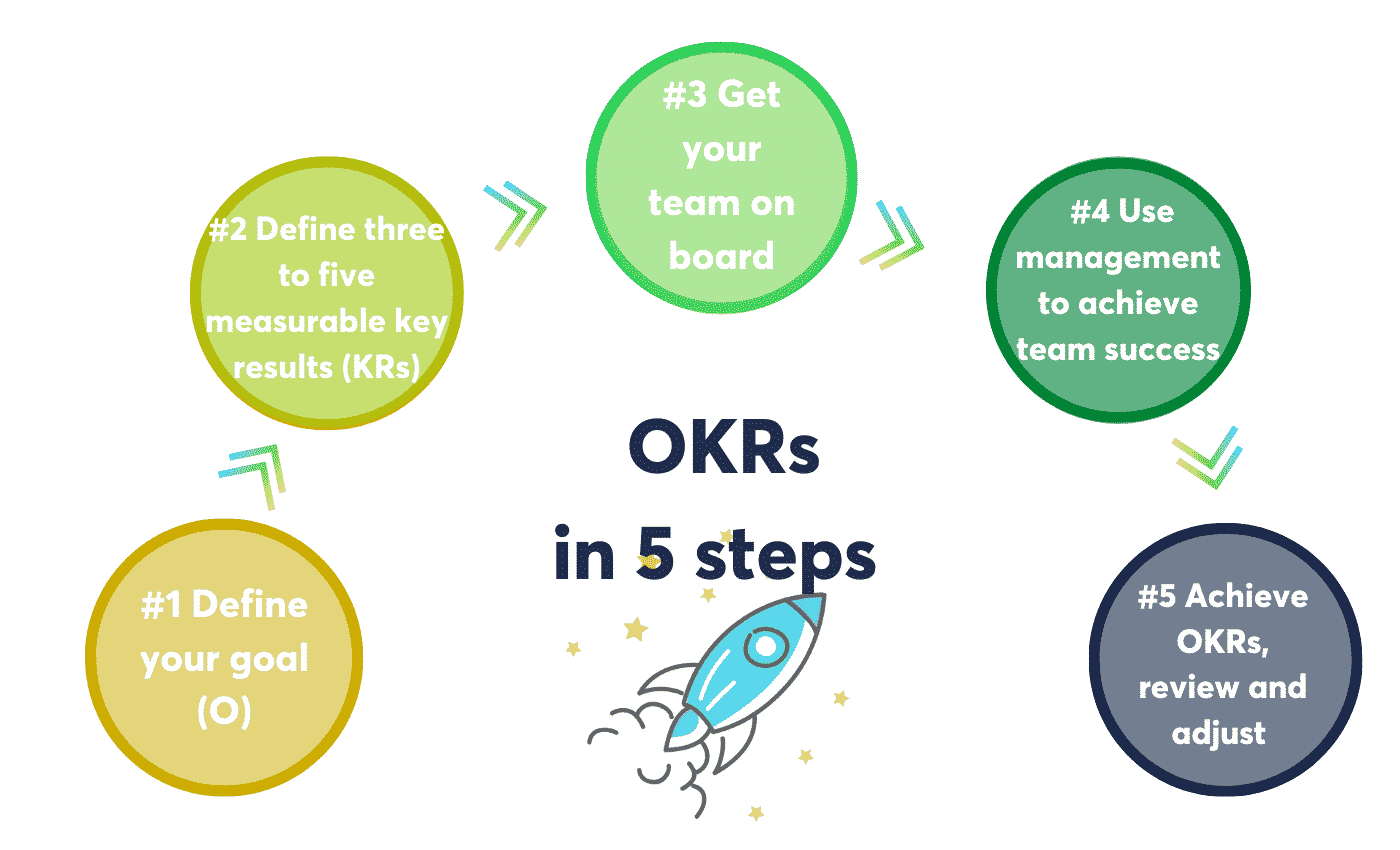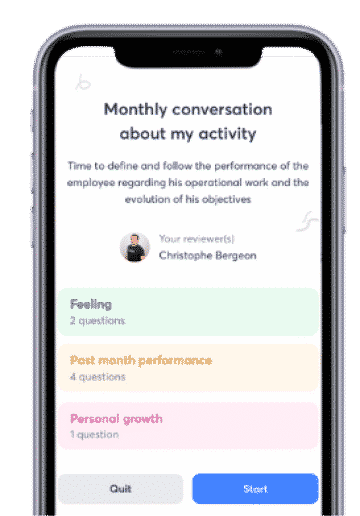This immense success, which exceeds even the wildest expectations of its founders, is due, at least in part, to a management tool that John Doerr discovered while working at Intel and that he introduced to the two young founders of Google. This tool, which he named OKR for Objectives and Key Results, is based on a simple but effective method: set an objective and then associate three to five measurable key results to evaluate its success. For example:
Objective: To design products and services that promote the circular economy and recycling in order to enhance their environmental and social impact.
Key Result: 100% of Google products launched in 2022 – and in the years after – will be made of recycled materials to maximize their use.
Although similar to KPIs (Key Performance Indicators) and other target-setting methods, OKRs have a significant advantage: they link operational activities in different areas within the organization to the overall mission it aspires to.
Our mission at Zest is to help organizations become more fulfilling and performing, in the best and simplest way possible. In our sector, everything is changing very quickly and we work hard to design the best solution to meet the needs of our clients in their strategy of listening and engaging their employees. Over the last two years, we have grown from 15 to 25 employees, welcomed tens of thousands of new users, expanded our software offer and proposed innovations for managers and company executives.
Like many startups, we have started using the OKR method at Zest to achieve our ambitious goals by mobilizing all our teams. We wanted a management by objectives system that combined greater autonomy for our employees with easily measurable results.
Here is our guide, based on our experience, to define and implement OKRs in your organization:
Give your teams a framework to work it, and review it constantly
An organization is a collective human adventure whose mission is to meet economic and social objectives. If “the solution is found along the way” to get there, it is essential that the destination be both clear and inspiring. It is this collective framework that leaders must propose and share with their teams.
At Zest, we have 3 components that constitute it:
- A mission that describes what we want to bring to the world (and to our clients),
- A business plan that describes what you want to build,
- Shared values that give concrete expression to the operating principles of our very human organization.
Every six months, we question this framework with our employees to ensure that it’s still relevant and shared.
At the level organization level, we have broken it down into 4 corporate objectives for the coming six months. These Objectives will then be broken down each quarter into team OKRs (including the management team!), by the teams themselves. Finally, each employee at his or her own level, with the help of the manager, defines their contributions through personal OKRs.
Properly define each OKR

Step 1: Define your goal (O)
Your goal is your mission: what you want to achieve to move your organization forward. An ambitious goal, which can be summed up in one line. A few examples of objectives:
- Launch a free version of our application.
- To become the market leader in Northern Europe in the field of human resources.
- Create relevant content that sets us apart from our competitors.
In the very American OKR approach, the level of ambition of the results to be achieved is as high as possible: (“Aim for the Moon”). It is a positive psychological approach that accepts exceeding expectations… and also failure. Achieving 70% of a very ambitious goal is acceptable because reaching all of them is almost impossible in Google’s “Think Big” approach.
At Zest, we encourage ambition because we are enthusiastic (one of our 4 values) but we prefer to set ourselves goals that can be reached… even if they remain ambitious.
Step 2: Set three to five measurable key results (KRs)
Translate your objective into key results: with concrete elements for your team that will allow you to measure your success.
For example, becoming the market leader in your industry can translate into the following result: acquire five new local customers, recruit a local reseller, and grow your sales by 100%.
These key results should be accompanied by numbers. Here are some examples of measures you can use:
- a date, for example the deadline for launching a new feature
- a percentage, for example the desired click rate for an emailing campaign
- an amount, such as your revenue target for the coming quarter
- the number of users you wish to reach
- a sales objective for a new product
Or any other data that allows you to measure this key result and see that it has been achieved.
Simon Raybould, scientist and author of the best-selling book “Presentation Genius: 40 Insights From the Science of Presenting,” teaches how to design effective presentations to achieve the right objectives (www.presentationgenius.info). He explains :
If it’s about a new environmental protection law, success is measured as, everybody adopts the new law. If it’s about best practices, success might be measured as half of them adopt best practices. And then you might refine that as, 75% adopt it this month, 15% adopt it next month, and then the remainder you go talk to individually
At Zest, we work with 3 Key Results per Objective, in order to make it easier to focus on what is most important and not to make it too complex to track all the OKRs at each level.
Step 3: Get your team on board
It is essential to discuss OKRs with team members at each step. From their elaboration to their final measurement, through their execution.
It is essential not to fall into micro-management and, on the contrary, to allow managers to choose their strategy for achieving their OKRs. You can let your teams decide for themselves how they want to translate their objectives into key results.
It is also important that employees have the autonomy to propose Key Results.
Every quarter, Zest teams meet to define and present their OKRs to the other teams. This collective ritual is very helpful for synchronization and collaboration between teams, and helps refine the plans thanks to each other’ feebacks. A good plan is one that is practical, well-understood, shared, and motivating.
Thanks to our solution, OKRs are shared with everyone, which allows them to be accessed at any time, according to everyone’s needs.
Step 4: Use management to achieve team success
Once the OKR plan has been defined, the most important step begins: its execution.
It all comes down to the implementation of a strategy or tactic. Every employee, every team will do its best to get there, but there will be unforeseen events, obstacles or even new ideas along the way.
This is the opportunity for the proximity manager to move from the “Command & Control” to the position of manager-coach. A regular follow-up every month or more frequently will allow for a constructive exchange to answer the essential question “What can be done to achieve our OKRs?”. If a manager or team member faces a problem, he or she can bring it up and discuss it in order to move forward.
This helps to stay on track and ensure that everyone is on the right track to achieve their key results.
At Zest, each manager organizes a monthly check-in with each member of his team. This is one of our most important management rituals.
There are 4 parts:
- The employee’s feelings, including the level of trust about achieving the team’s OKRs
- Update on the progress of OKRs to assess and discuss their progress
- The action plan to succeed together in order to identify the new actions required
- The Monthly Check-in Ritual at Zest

Given the current health crisis and extensive remote working, it is essential to have the right tools to communicate remotely with your teams. This is exactly what we have been able to do by using Zest Solution and its Check-ins feature which integrates the follow-up of objectives in a discussion framework between the manager and the employee.
To find out more about Check-ins with Zest -> https://zestmeup.com/solution/perform/
Step 5: Achieve your OKRs, review them and adjust your strategy
Ideally, once you have reached your OKRs, you have fulfilled your mission. This success should be associated with performance, perhaps even greater than you thought was possible.
However, we know that there are times when you may not achieve your goals. If this is the case, it is essential to evaluate them and readjust your strategy. What didn’t work? How can you be more effective next time?
Conclusion
The OKR method is very useful to help teams implement a strategy. It is pragmatic, simple, and it helps to get to the heart of the matter quickly.
It facilitates manager-employee collaboration, without micro-management (if it is applied along with a manager-coach attitude).
It is important to remember that OKRs are not limited to start-ups and high-tech companies, but are applicable to any type of organization, as long as you want to measure and monitor what you are doing. The more you use the OKRs, the more you will understand the mechanisms and thus be able to define and deploy them.
As Simon Raybould explains
It’s a process, not a product.
And at Zest, we know how effective this management method can be in achieving ambitious goals. But it also represents a change that must be managed and implemented gradually. We recommend that you anticipate 1 or 2 quarterly running-in cycles.
The use of a web and mobile solution such as Zest makes the operational deployment very easy, systematic and digital-centered. This is particularly interesting with remote working, which is becoming more and more important.
Finally, the OKRs can be integrated into annual performance evaluation cycles if they exist in your organization. They should simplify the evaluation of employees in terms of the objectives that have been fixed, but also the definition of future objectives!




